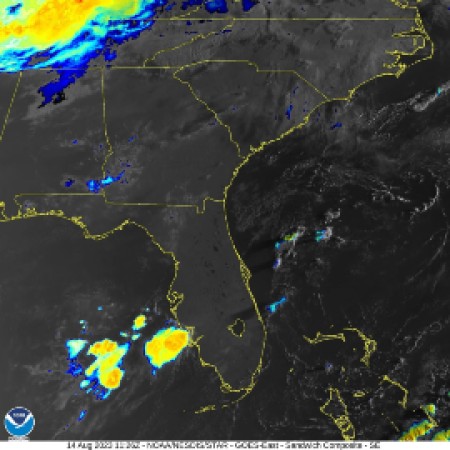National Ocean and Atmospheric Administration Updates Hurricane Predictions for 2023
FLORIDA – The United States National Ocean and Atmospheric Administration (NOAA) on August 11th updated its prediction for storms and hurricanes from “near normal” to “ above normal”.
 The new prediction now includes a 70% chance of 14-21 named storms, of which 6-11 could become hurricanes, and 2-5 could become major hurricanes.
The new prediction now includes a 70% chance of 14-21 named storms, of which 6-11 could become hurricanes, and 2-5 could become major hurricanes.
NOAA said it had heightened the outlook projection due to current ocean and atmospheric conditions, such as record-warm sea surface temperatures.
The updated outlook raises the likelihood of an above-normal Atlantic hurricane season to 60%, increased from the outlook issued in May, which predicted a 30% chance.
The agency also explained that a below-normal wind shear forecast, slightly below-normal Atlantic trade winds and a near- or above-normal West African Monsoon were also key factors in the decision to update the seasonal forecast.
The Atlantic basin experienced an active start to the hurricane season with five storms that have reached at least tropical storm strength, including one hurricane.
Matthew Rosencrans, lead hurricane season forecaster with NOAA’s Climate Prediction Center is urging people living in the hurricane belt to prepare for the continuing season.
“The main climate factors expected to influence the 2023 Atlantic hurricane activity are the ongoing El Nino and the warm phase of the Atlantic Multi-Decadal Oscillation, including record-warm Atlantic sea surface temperatures,” Rosencrans said.
NOAA stressed that its hurricane outlooks are forecasts of overall season activity, not landfalls and it is urging residents in vulnerable areas to have a well-thought-out hurricane plan and stay informed through official channels as this season progresses.
Though the region is currently experiencing the El Nino conditions, which helps to lessen tropical activity during the Atlantic hurricane season, climate scientists say those limiting conditions have been slow develop and “are forecasting that the associated impacts that tend to limit tropical cyclone activity may not be in place for much of the remaining hurricane season.”


